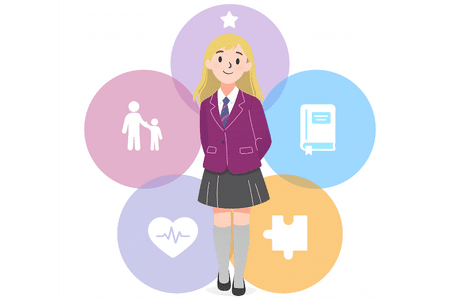It’s common knowledge that teachers and wider education staff in the UK are overworked – this was only exacerbated as a result of the COVID-19 pandemic.
According to a 2021 National Education Union survey, completed by more than 10,000 teachers, one in three teachers said they plan to quit teaching within five years because of increased workload and diminishing respect for the profession. In 2022, thousands of teachers in Scotland joined rallies as part of the country’s first national schools strike in over a decade, regarding a dispute over teacher’s pay. The strike has led to the closure of nearly every primary and secondary school in the country, after a revised pay offer put to unions was rejected as “insulting”.
The survey, which was conducted among teachers, school leaders and support staff in Schools in England, Wales and Northern Ireland, found that 70% of teachers had seen their workload increase in recent years. Moreover, 95% said they were concerned about the impact of the workload on their wellbeing, while more than 55% believed their work-life balance was now worse than before the first lockdown.
Educators work amongst the largest number of hours of any profession, and according to the Organisation for Economic Cooperation and Development (OECD), those working in England work longer hours than teachers anywhere else in Europe. England also has the highest percentage of employees who work unpaid overtime, averaging 12 hours per week compared to the average of 7.6.
Thankfully, the same survey also hinted at potential solutions to the problem.
For example, reducing bureaucracy was cited by 44% of teachers as one way to reduce workloads. Meanwhile, 39% said reducing data handling tasks would help too.
Safeguarding is an area we’re seeing schools continually look to optimise. A key and legal requirement set out by the government when working with young people is safeguarding and protecting them. If monitoring of safeguarding concerns isn’t done properly, it can mean young people don’t get the support they need, when they need it, which places them at risk of falling through the net.
Safeguarding of course requires data handling. Efforts are being made to try and make safeguarding data handling more efficient and accurate, ensuring prompt interventions are made and in turn reducing the time it takes to communicate across departments. Safeguarding software can enable teachers and staff to easily record any concerns about children and young people in one place, helping safeguarding leads to spot any patterns of behaviour, which can help to build a detailed picture of the appropriate level of support that may be needed. Safeguarding software also ensures that all relevant staff members have access to any concerns logged – helping to make communication amongst staff easier.
With many staff in education struggling to cope with their current workloads, it is vital now more than ever for safeguarding to be fitted seamlessly into staff routines.
So, how exactly can schools and other settings find those efficiencies when it comes to safeguarding? We’ve put together a guide to help professionals answer that very question.
To learn more, download Creating Efficiencies: Why a Consistent Approach is Key to Safeguarding.




